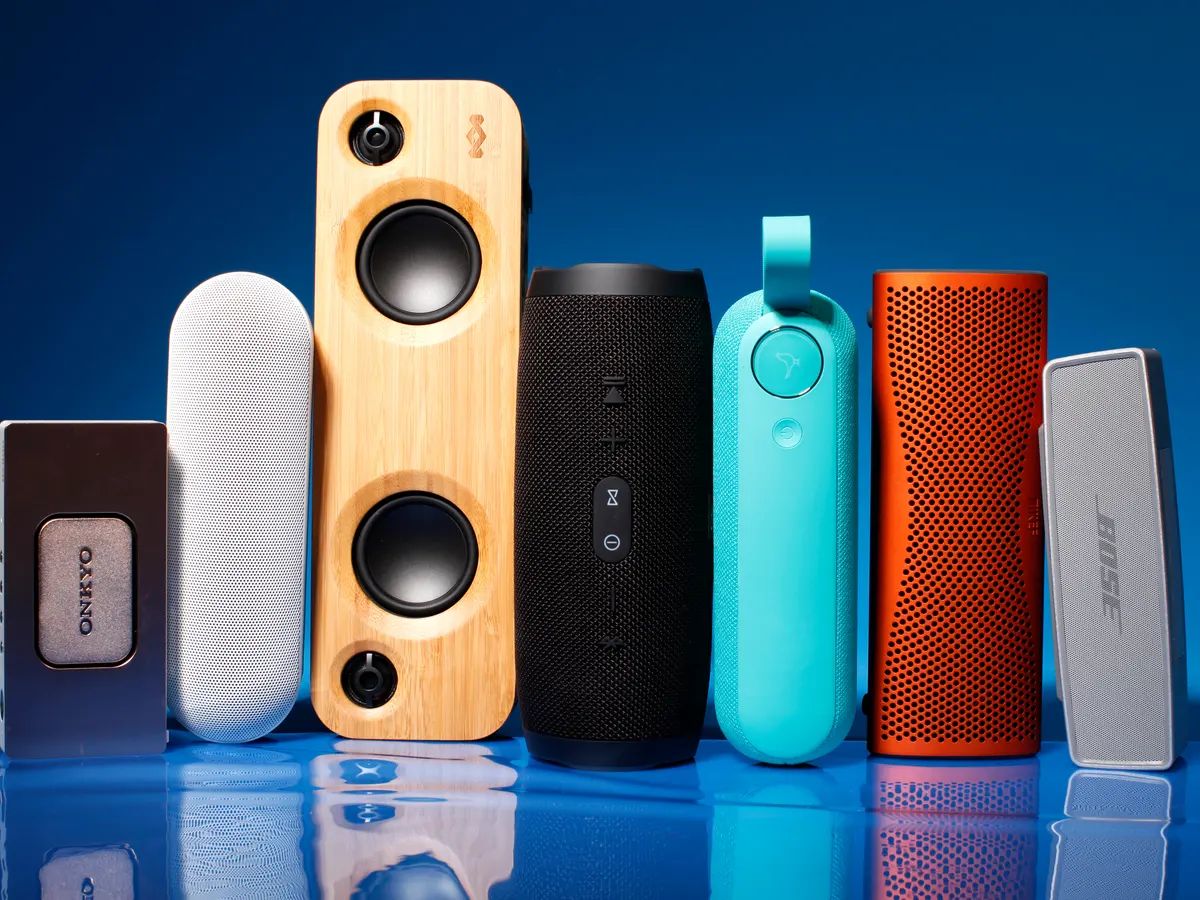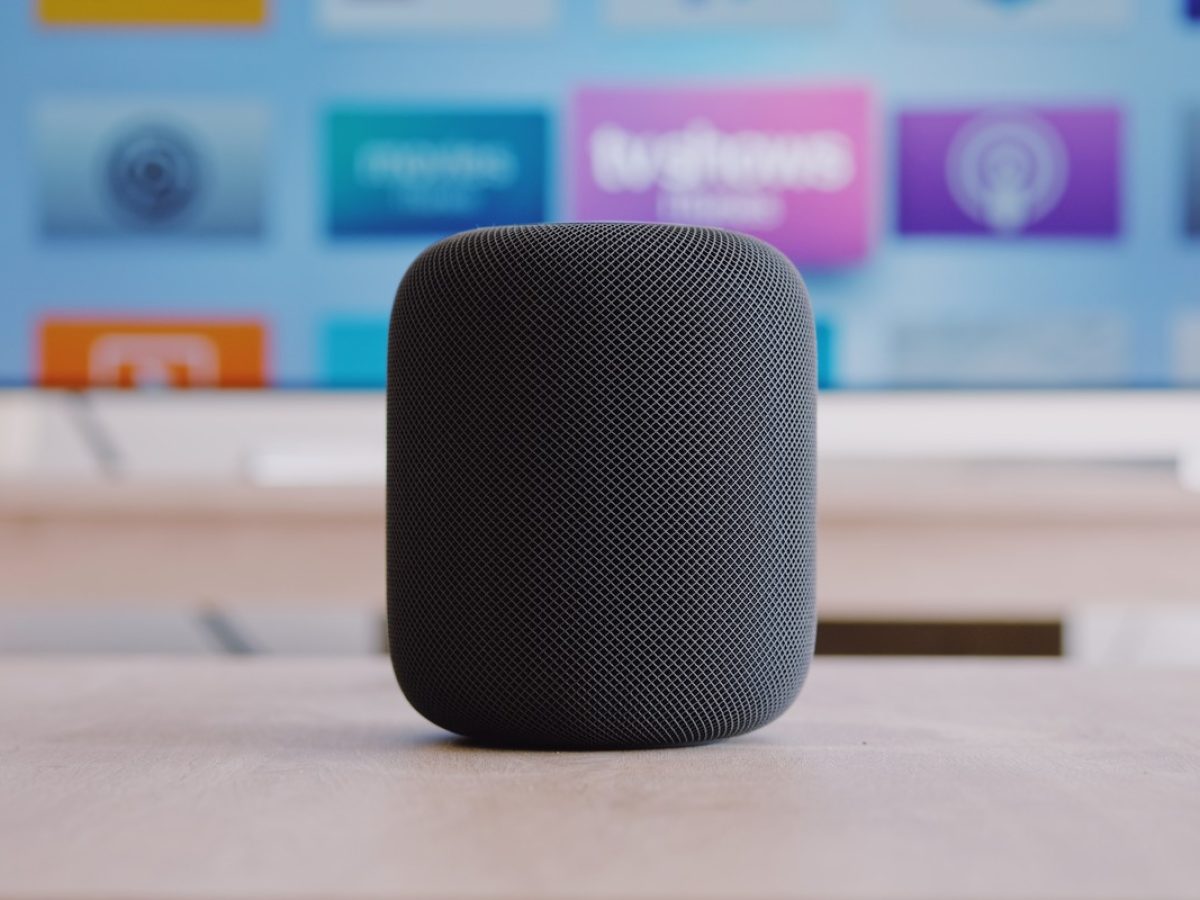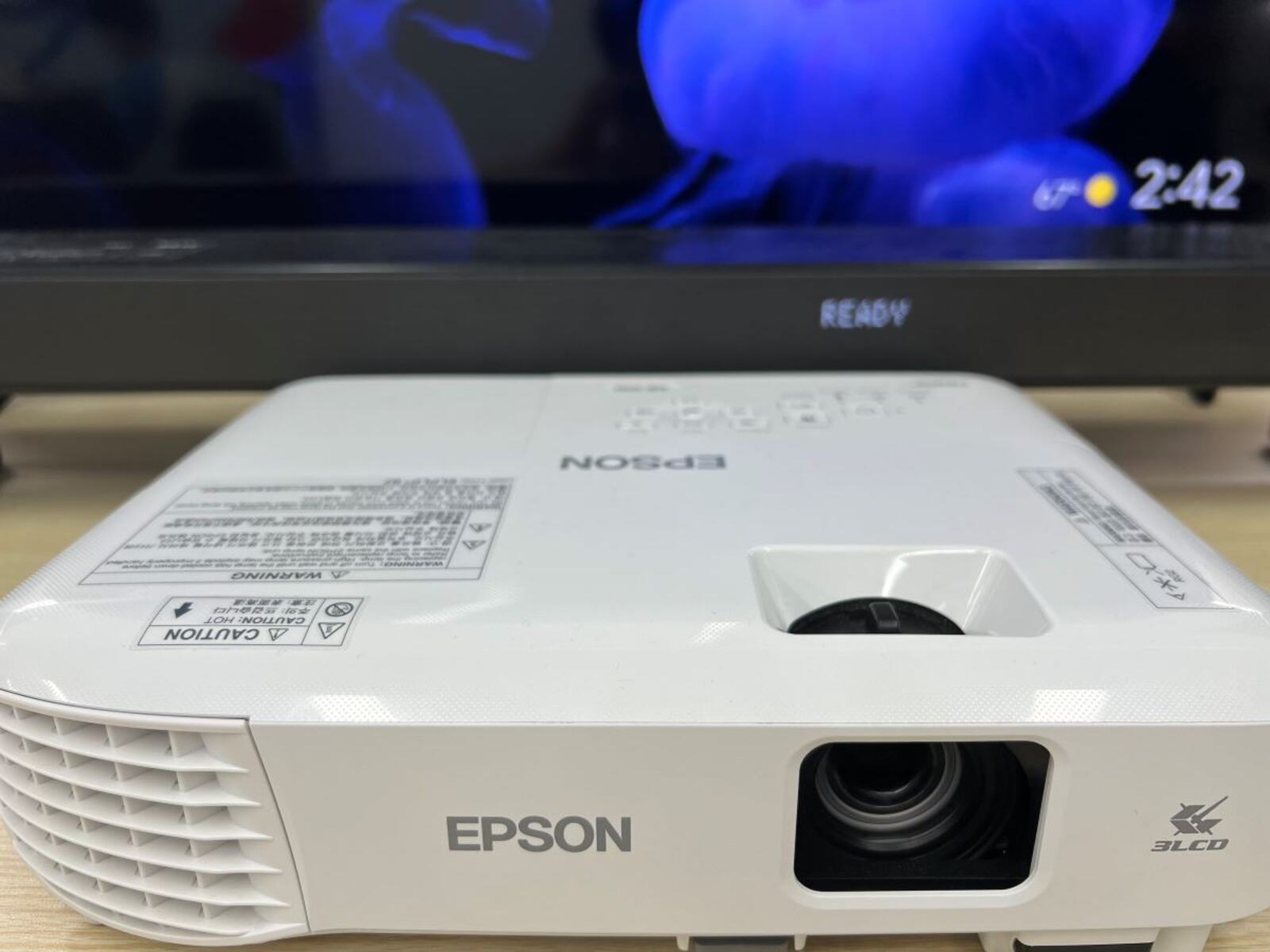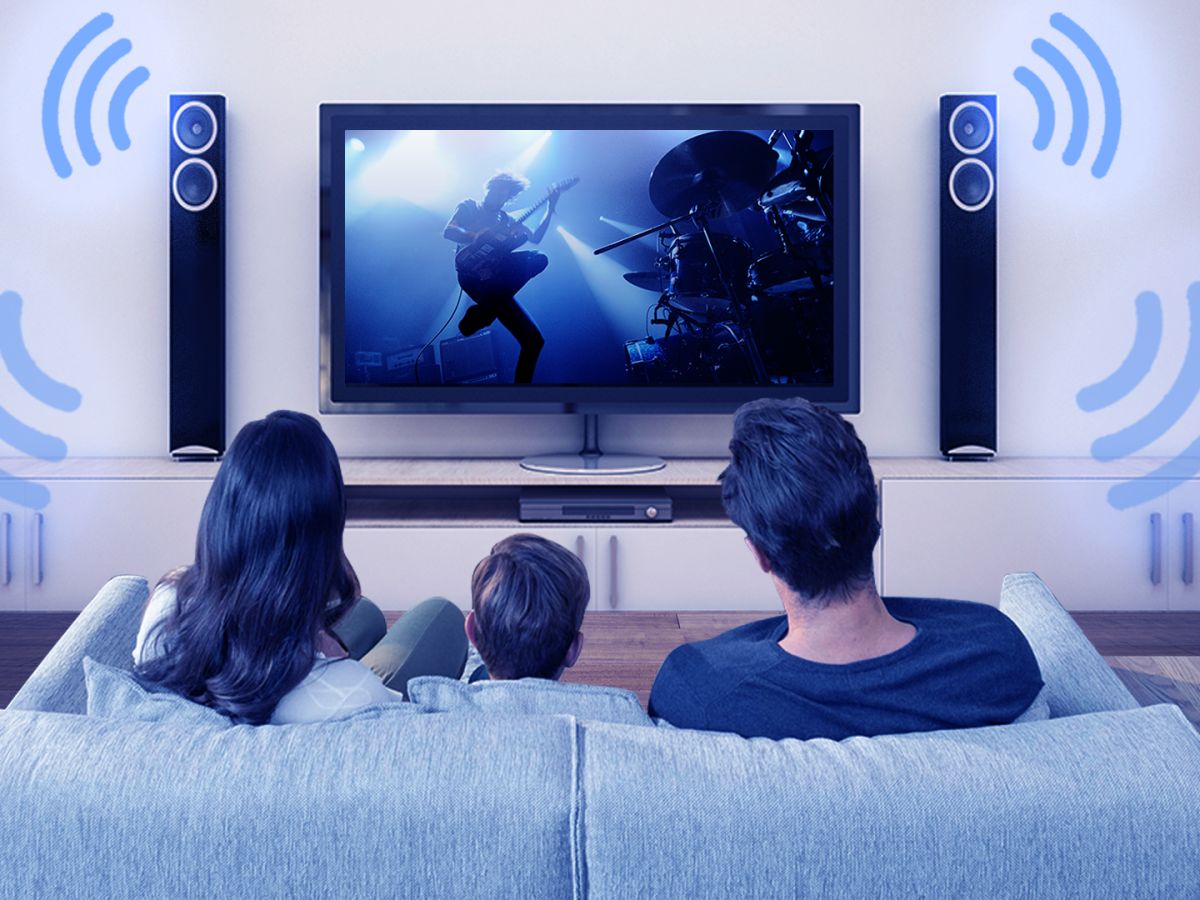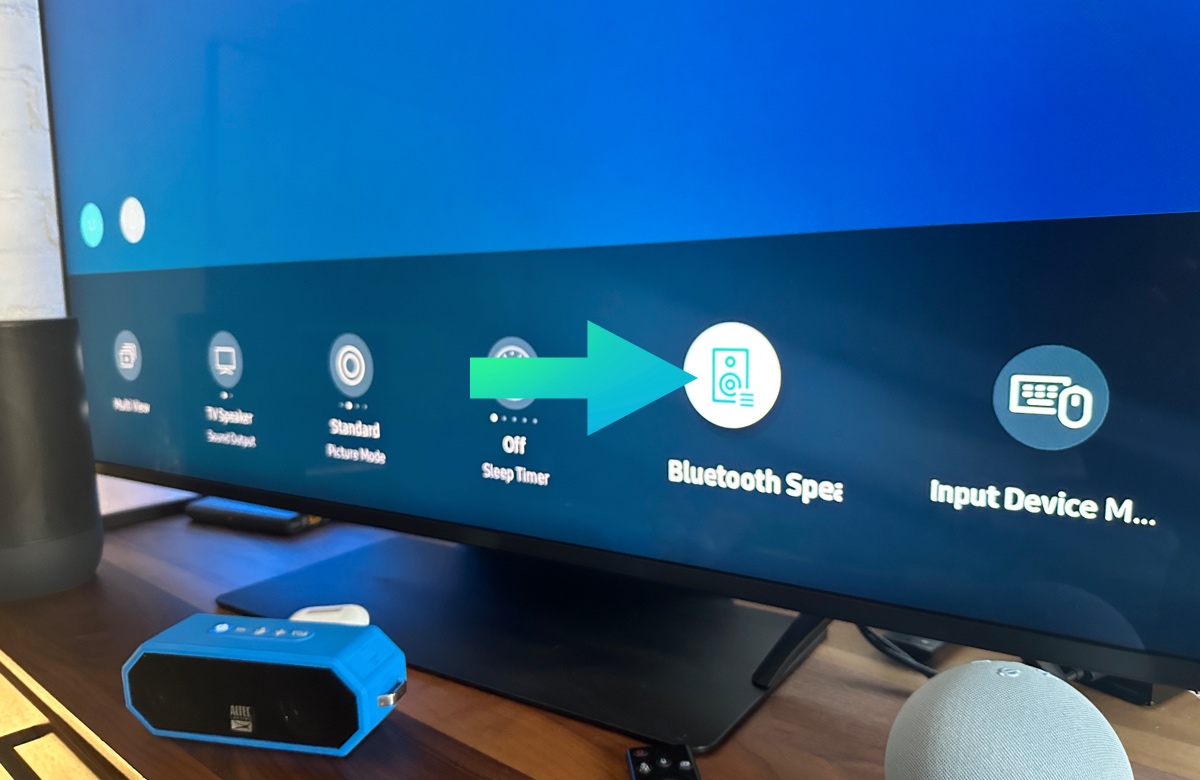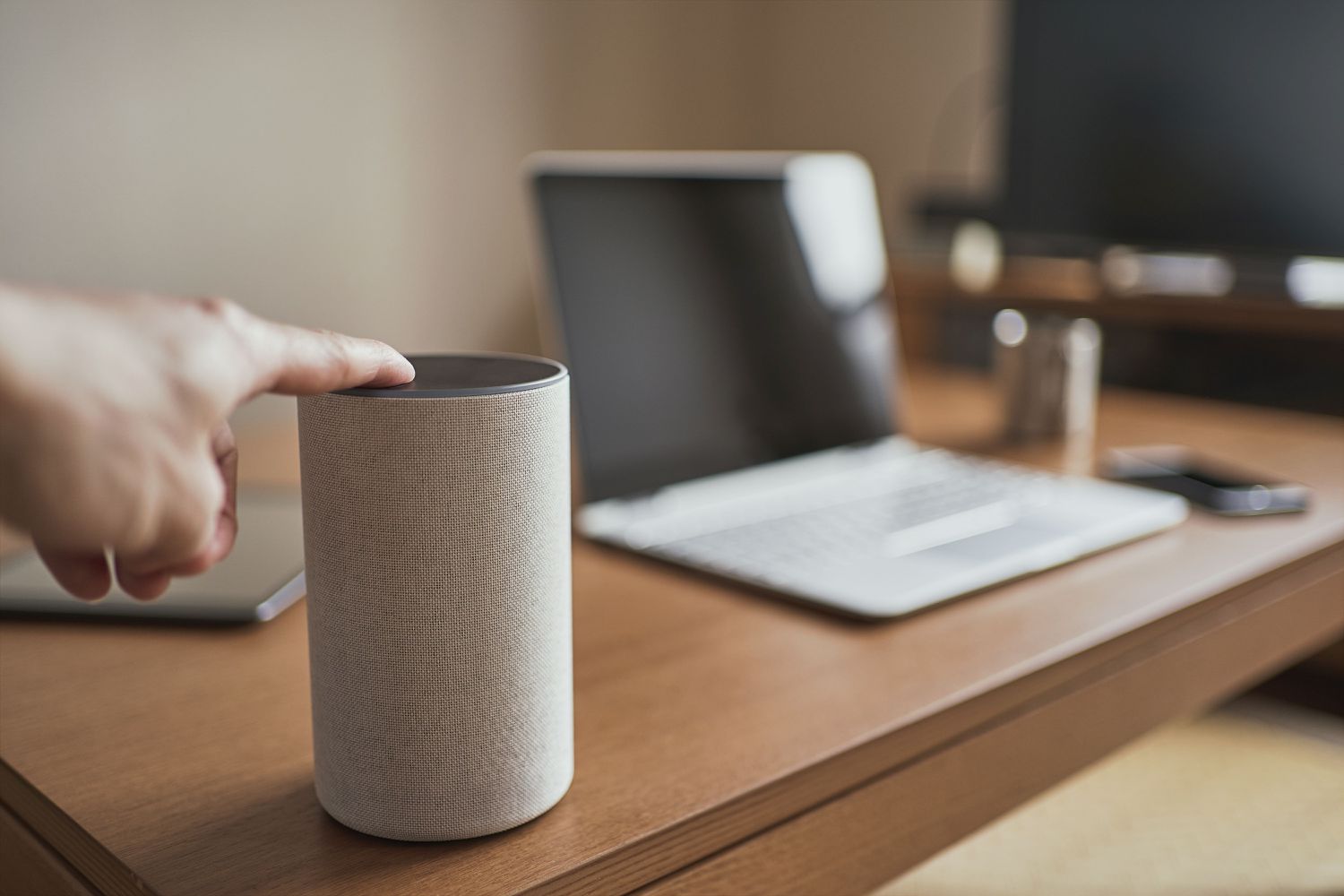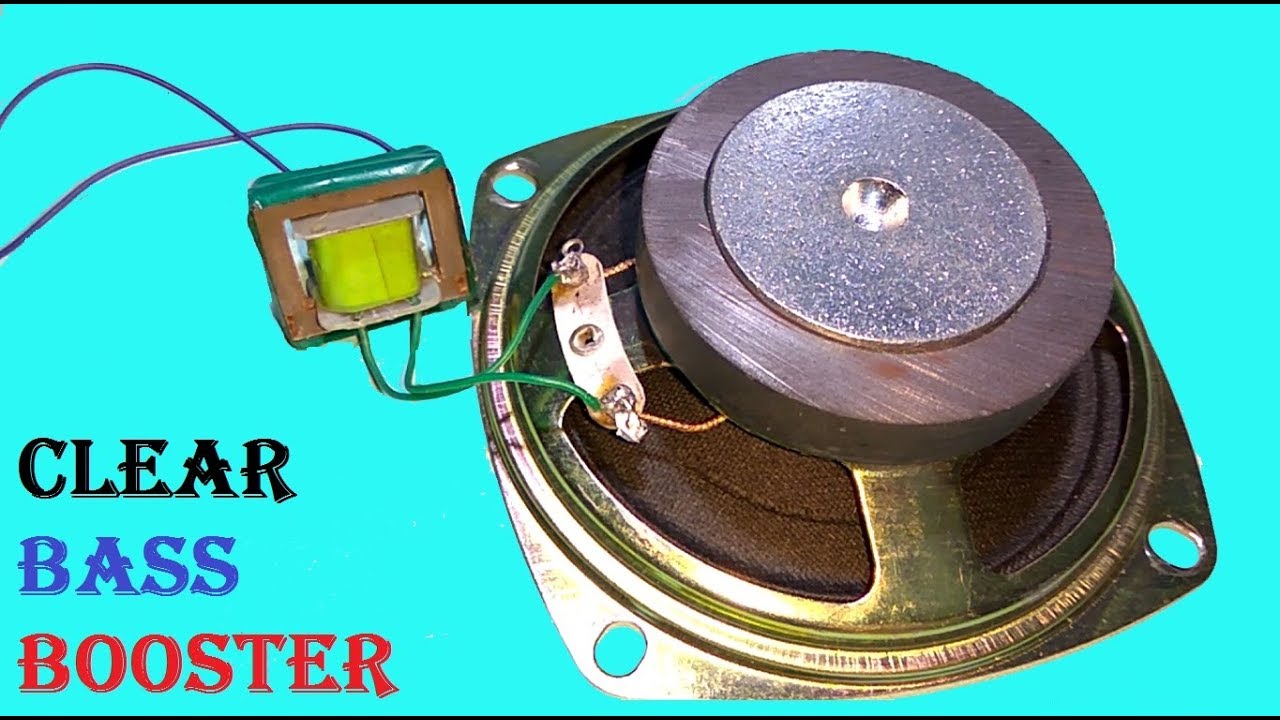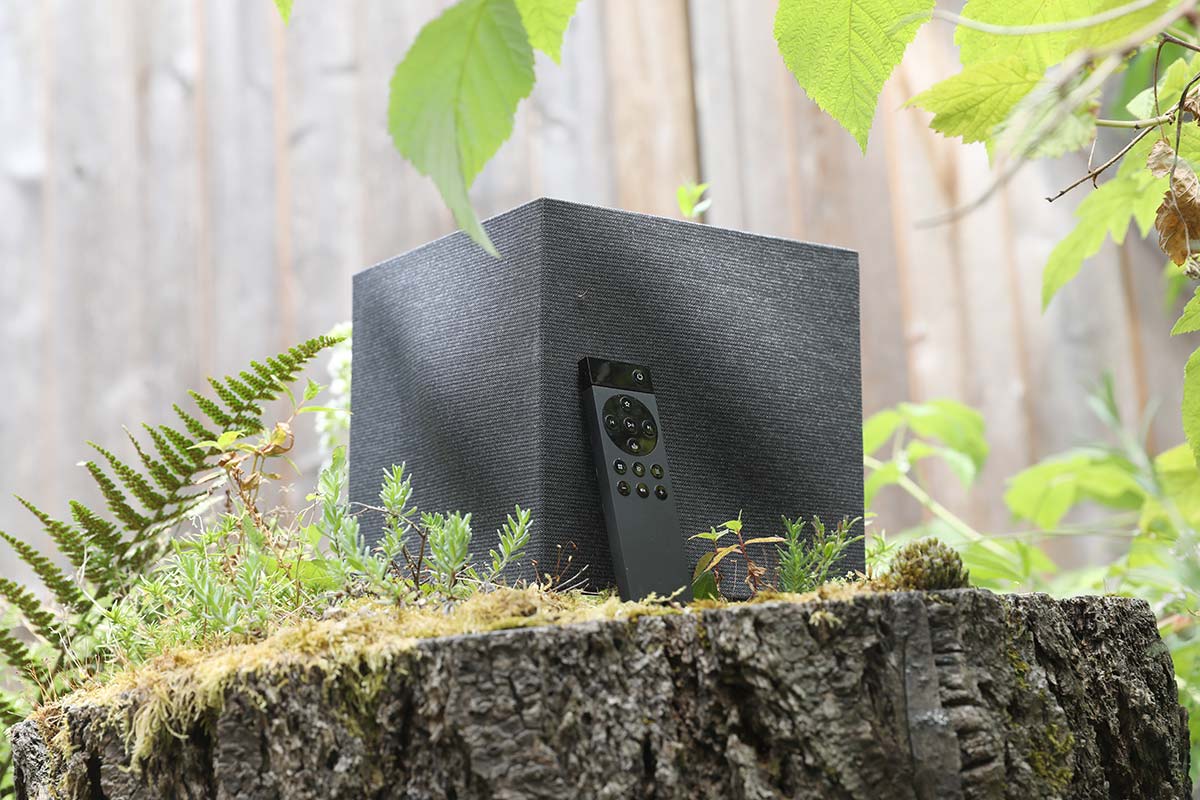Introduction
Bluetooth speakers have revolutionized the way we listen to music or enjoy multimedia content on the go. These portable speakers offer convenience, versatility, and high-quality audio without the need for tangled wires or complicated setups.
Bluetooth technology has become a standard feature in most electronic devices, allowing seamless connectivity between devices such as smartphones, tablets, laptops, and more. Bluetooth speakers utilize this wireless technology to deliver audio playback from these devices, making them an essential accessory for music lovers and audio enthusiasts.
Whether you’re hosting a party, going on a road trip, or simply enjoying some downtime at home, Bluetooth speakers provide the perfect solution for sharing your favorite audio content with friends and family. With a wide range of options available in the market, from compact to high-powered, there is a Bluetooth speaker to suit every need and budget.
In this article, we will explore the functionality, benefits, and types of Bluetooth speakers available. We will also discuss the important factors to consider when purchasing a Bluetooth speaker, as well as providing some troubleshooting tips and advice for maximizing the battery life.
So, if you’re looking to level up your audio experience and enjoy music wirelessly, keep reading to discover everything you need to know about Bluetooth speakers.
How do Bluetooth speakers work?
Bluetooth speakers work by utilizing Bluetooth technology to wirelessly connect to audio playback devices such as smartphones, tablets, or laptops. The process begins with the Bluetooth speaker being placed in pairing mode, allowing it to establish a connection with the desired playback device.
Once the connection is established, the audio signals are transmitted from the playback device to the Bluetooth speaker via radio waves. These waves operate within the 2.4 GHz frequency range, which is a standard for Bluetooth technology. The signals are then received by the Bluetooth speaker and converted into sound waves through built-in speakers or drivers.
The range of Bluetooth connectivity varies between different speakers, but it is typically around 30 feet. This distance allows for flexibility and mobility, allowing you to move around freely while still enjoying uninterrupted audio playback.
Bluetooth speakers often feature control buttons or touch panels that allow you to adjust the volume, play, pause, or skip tracks directly from the speaker without having to use the connected playback device. This convenient feature adds to the user-friendly nature of Bluetooth speakers, providing a hassle-free audio experience.
It’s important to note that Bluetooth speakers are not just limited to music playback. They can also be used for hands-free calling, as many models come equipped with built-in microphones and speakerphone functionality. This allows you to answer calls without having to reach for your phone, making it a convenient option for conference calls or conversations with friends and family.
In addition, some Bluetooth speakers offer additional features such as water resistance, rugged construction for outdoor use, or the ability to connect multiple speakers together for a surround sound experience. These features make Bluetooth speakers incredibly versatile, catering to a wide range of users and their specific needs.
All in all, Bluetooth speakers provide a convenient and wireless way to enjoy high-quality audio from your favorite devices. Their ease of use, portability, and compatibility with various devices make them a popular choice for music enthusiasts and audio lovers alike.
Benefits of using Bluetooth speakers
Bluetooth speakers offer a plethora of benefits that make them a popular choice for music enthusiasts and audio lovers. Here are some of the key advantages of using Bluetooth speakers:
- Portability: One of the biggest advantages of Bluetooth speakers is their portability. These compact speakers are designed to be lightweight and easy to carry, allowing you to take your music or podcasts wherever you go. Whether you’re on a beach trip, hiking, or simply moving from one room to another, Bluetooth speakers provide the convenience of on-the-go audio entertainment.
- Wireless Connectivity: The wireless nature of Bluetooth speakers eliminates the need for tangled wires and cumbersome setups. With Bluetooth technology, you can connect your speaker to your smartphone, tablet, or laptop without the hassle of dealing with cables. This seamless wireless connectivity allows for easy sharing and control of your audio content.
- Device Compatibility: Bluetooth speakers are compatible with a wide range of devices, including smartphones, tablets, laptops, and even smart TVs. This versatility ensures that you can enjoy your favorite audio content from any compatible device with ease.
- Easy Setup: Setting up Bluetooth speakers is a breeze. With a few simple steps, you can pair your speaker with your device and start enjoying your music in no time. Most Bluetooth speakers feature intuitive controls and prompts, making the setup process user-friendly and hassle-free.
- Quality Sound: Despite their compact size, Bluetooth speakers offer impressive sound quality. Many models come equipped with advanced audio technologies that deliver clear, balanced, and room-filling sound. Whether you’re listening to music, watching movies, or engaging in conference calls, Bluetooth speakers ensure a rich audio experience.
- Versatility: Bluetooth speakers are not just limited to music playback. They can also be used for hands-free calling, as many models feature built-in microphones and speakerphone functionality. Additionally, some Bluetooth speakers come with built-in FM radios, USB ports, or memory card slots, expanding their functionality and versatility.
- Battery Life: Bluetooth speakers are designed with battery-powered operation in mind. They typically offer long battery life, allowing for hours of continuous playback without the need for frequent charging. This makes Bluetooth speakers ideal for outdoor activities or situations where a power source may not be readily available.
By harnessing the power of Bluetooth technology, these speakers provide a host of benefits that enhance your audio experience. The convenience, portability, and versatility of Bluetooth speakers make them an indispensable accessory for music lovers and audio enthusiasts.
Factors to consider when buying Bluetooth speakers
When it comes to buying Bluetooth speakers, there are several factors to consider to ensure that you choose the right speaker for your needs. Here are some key factors to keep in mind before making a purchase:
- Sound Quality: The sound quality is a crucial factor to consider when purchasing Bluetooth speakers. Look for speakers that offer clear, crisp audio and good bass response. It’s also worth considering the speaker’s frequency range and any built-in audio enhancements or technologies.
- Portability: Determine how portable you need your Bluetooth speaker to be. If you plan on using it primarily at home, a larger, more powerful speaker might be suitable. However, if you need a speaker that you can easily carry around, opt for a more compact and lightweight model.
- Battery Life: Consider the battery life of the Bluetooth speaker, especially if you intend to use it while on the move. Look for speakers with longer battery life, preferably lasting at least 8-10 hours on a single charge, to ensure uninterrupted playback.
- Water Resistance: If you plan to use your Bluetooth speaker outdoors or in wet environments, consider choosing a water-resistant or waterproof model. Look for speakers with an IPX rating that can withstand splashes, rain, or even submersion in water.
- Connectivity Options: Assess the connectivity options offered by the Bluetooth speaker. While Bluetooth is the primary wireless connection, it’s also beneficial to have additional connectivity options such as USB ports, AUX inputs, or memory card slots for more flexible playback options.
- Brand and Reputation: Research the brand and check customer reviews to determine the reputation and reliability of the Bluetooth speaker. Established and reputable brands often offer better quality, customer support, and consistent performance.
- Price Range: Set a budget for your Bluetooth speaker purchase and consider the range of options available within that budget. Keep in mind that higher-priced speakers may offer better audio quality and additional features, but there are also affordable options that provide value for money.
- Extra Features: Consider any additional features or functionalities that you may need, such as built-in voice assistants, NFC pairing, multi-speaker connectivity, or compatibility with virtual assistants like Siri or Google Assistant.
- Warranty: Check the warranty provided by the manufacturer. A longer warranty period indicates the manufacturer’s confidence in their product’s quality and provides better protection against potential defects or malfunctions.
By considering these factors, you can make an informed decision and choose a Bluetooth speaker that best suits your audio requirements, lifestyle, and budget. Remember to prioritize the factors that are most important to you to ensure a satisfying and enjoyable audio experience with your new Bluetooth speaker.
Different types of Bluetooth speakers
Bluetooth speakers come in various shapes, sizes, and designs, catering to different audio needs and preferences. Here are some common types of Bluetooth speakers available in the market:
- Portable Bluetooth Speakers: These are compact and lightweight speakers that are designed for easy transport. They are ideal for on-the-go use and often come with a built-in battery for wireless operation. Portable Bluetooth speakers strike a balance between portability and sound quality, making them a popular choice for outdoor activities or travel.
- Water-Resistant or Waterproof Bluetooth Speakers: These speakers are designed to withstand exposure to water. They are ideal for poolside parties, beach trips, or even in the bathroom. Water-resistant or waterproof Bluetooth speakers often come with an IPX rating, indicating their level of water resistance.
- Wireless Home Bluetooth Speakers: These speakers are larger and more powerful than portable ones, focusing on delivering higher audio quality and volume levels. They are designed for use in a home environment, allowing you to enjoy immersive sound for movies, music, or gaming. Wireless home Bluetooth speakers may have more advanced features like multi-room connectivity or voice assistants.
- Outdoor Bluetooth Speakers: Made to withstand rough conditions and outdoor environments, these rugged speakers are built with durability in mind. They are perfect for camping, hiking, or any outdoor adventure. Outdoor Bluetooth speakers are often resistant to dust, shock, and extreme temperatures.
- Bookshelf Bluetooth Speakers: These speakers are designed to be placed on a bookshelf or a desk. They offer excellent audio performance and are suitable for use in a small room or office setup. Bookshelf Bluetooth speakers may also have additional connectivity options or support for optical inputs.
- Party Bluetooth Speakers: These speakers prioritize volume and bass response, making them ideal for parties or gatherings. They often come with built-in LED lights, DJ effects, or karaoke features, enhancing the party atmosphere.
- Solar-Powered Bluetooth Speakers: These eco-friendly speakers utilize solar panels to convert sunlight into energy for extended playtime. Solar-powered Bluetooth speakers are great for outdoor enthusiasts or environmentally-conscious individuals who want to reduce their reliance on conventional power sources.
- Smart Bluetooth Speakers: These speakers come integrated with voice assistants like Amazon Alexa or Google Assistant. They not only provide audio playback but also offer smart home control and voice command functionalities.
Each type of Bluetooth speaker has its own unique set of features and advantages. Consider your specific needs and preferences to choose the type that best suits your lifestyle and audio requirements. Whether you’re looking for portability, durability, sound quality, or smart capabilities, there is a Bluetooth speaker available to enhance your audio experience.
Common features of Bluetooth speakers
While Bluetooth speakers come in different shapes and sizes, they often share common features that enhance their functionality and usability. Here are some of the common features you can expect to find in Bluetooth speakers:
- Bluetooth Connectivity: As the name suggests, Bluetooth speakers are equipped with Bluetooth technology, allowing wireless connectivity to compatible devices. This feature enables seamless audio streaming without the need for cables or wires.
- Control Buttons: Bluetooth speakers typically come with control buttons for easy playback control. These buttons allow you to adjust volume, play/pause music, skip tracks, and even answer or end phone calls directly from the speaker.
- Built-in Microphone: Many Bluetooth speakers have a built-in microphone, enabling hands-free calling. This feature allows you to answer or make calls directly from the speaker without having to reach for your smartphone.
- Battery Operated: Bluetooth speakers are often battery-powered, ensuring portability and freedom from power cords. They come with built-in rechargeable batteries, which can be charged using a USB cable or a dedicated charger.
- AUX and USB Ports: Some Bluetooth speakers offer additional connectivity options like an AUX input or USB port. This allows you to connect non-Bluetooth devices or play music directly from a USB flash drive.
- Speakerphone Functionality: Many Bluetooth speakers have speakerphone capabilities, allowing you to take calls through the speaker. This feature is especially useful when you are using the speaker in a group setting or need to have hands-free conversations.
- Water Resistance: Some Bluetooth speakers come with water resistance or waterproofing capabilities. This feature makes the speaker more durable and suitable for use in outdoor environments or near water sources.
- Wireless Pairing: Some Bluetooth speakers support wireless pairing, allowing you to connect multiple speakers together for a more immersive and amplified audio experience. This feature is particularly useful in creating a surround sound effect or for larger gatherings.
- LED Lights: Certain Bluetooth speakers feature built-in LED lights that add visual flair to your audio experience. These lights often sync with the rhythm of the music, creating a vibrant and dynamic visual display.
- Voice Control: Some Bluetooth speakers integrate with smart voice assistants like Amazon Alexa or Google Assistant. This enables hands-free voice control, allowing you to play music, adjust settings, or control other smart devices using voice commands.
These common features improve the overall functionality and convenience of Bluetooth speakers. Depending on your preferences and requirements, you can choose a speaker with the specific features that enhance your audio experience and suit your lifestyle.
Steps to connect a Bluetooth speaker to a device
Connecting a Bluetooth speaker to a device is a simple process that allows you to enjoy wireless audio playback. Here are the general steps to connect a Bluetooth speaker to a device:
- Prepare the Bluetooth Speaker: Ensure that your Bluetooth speaker is charged and in pairing mode. Some speakers automatically enter pairing mode when turned on, while others require you to press a dedicated button to initiate the pairing process. Consult the speaker’s user manual for specific instructions.
- Enable Bluetooth on the Device: On the device you wish to connect to the speaker, ensure that Bluetooth is enabled. This can usually be done in the device’s settings menu. Look for the Bluetooth option and toggle it on.
- Scan for Available Devices: Once Bluetooth is enabled on the device, scan for available devices or look for the Bluetooth speaker’s name in the list of discoverable devices.
- Select the Bluetooth Speaker: From the list of available devices, select the name or model number of your Bluetooth speaker to initiate the pairing process. The speakers may have a unique name or identifier, making it easier to identify and select.
- Complete the Pairing Process: After selecting the speaker, the device will attempt to establish a connection. The speaker may emit a beep or indicate that it is paired with the device. Once the pairing process is complete, you should see a confirmation message on the device’s screen.
- Test the Connection: To ensure that the Bluetooth speaker is properly connected, play some audio on the device. The sound should now be transmitted to the Bluetooth speaker wirelessly. Adjust the volume on the device or the speaker’s controls to achieve the desired audio level.
- Reconnecting: In subsequent uses, your device should automatically recognize the previously paired Bluetooth speaker when it is within range and turned on. Simply ensure that Bluetooth is enabled on your device, and the speaker should connect automatically.
- Disconnecting: To disconnect the Bluetooth speaker from the device, simply turn off the speaker or disable Bluetooth on the device. Alternatively, you can go to the Bluetooth settings on your device and select the option to disconnect or forget the Bluetooth speaker.
Keep in mind that the exact process may vary slightly depending on the device and the Bluetooth speaker model. It is always a good idea to consult the user manual or the manufacturer’s website for specific instructions tailored to your particular devices.
By following these steps, you can easily connect your Bluetooth speaker to a compatible device and enjoy wireless audio playback without the need for cables or wires.
Troubleshooting common Bluetooth speaker issues
While Bluetooth speakers are generally reliable and easy to use, they may occasionally encounter common issues. Here are some troubleshooting steps for common Bluetooth speaker problems:
- Connection Issues: If you’re having trouble connecting your Bluetooth speaker to a device, ensure that Bluetooth is enabled on both the speaker and the device. Move the devices closer together to improve the connection, as distance can affect Bluetooth signal strength.
- Poor Sound Quality: If the sound quality from your Bluetooth speaker is poor, ensure that the speaker is not too far from the connected device. Check that the volume levels are adjusted appropriately both on the speaker and the device. Interference from other devices or wireless signals in the area can also impact sound quality, so try moving the speaker to a different location if possible.
- Audio Lag or Delay: If you experience audio lag or delay when using your Bluetooth speaker, it could be due to a weak Bluetooth connection or an outdated Bluetooth driver. Try moving the speaker and your device closer together to improve the connection, or update the Bluetooth driver on your device if necessary.
- Charging Issues: If your Bluetooth speaker is not charging properly, ensure that the charging cable is securely connected to both the speaker and the power source. Try using a different charging cable or power adapter to eliminate any issues with the charging equipment. If the problem persists, contact the manufacturer for further assistance.
- Bluetooth Compatibility: Check the compatibility of your Bluetooth speaker with the device you are trying to connect it to. Ensure that the device supports Bluetooth connectivity and is compatible with the speaker’s Bluetooth version. Some devices may have limitations or connectivity issues with specific Bluetooth profiles or protocols.
- Resetting the Speaker: If you’re experiencing persistent issues with your Bluetooth speaker, a simple reset may help. Refer to the speaker’s user manual for instructions on how to perform a reset. This process usually involves holding down a specific button or combination of buttons for a few seconds to initiate the reset.
- Software Updates: Check for any available software updates for your Bluetooth speaker. Manufacturers may release firmware updates to address known issues and improve performance. Visit the manufacturer’s website or check their support page for any available updates and follow the instructions for updating the speaker’s firmware.
- Factory Reset: If all else fails and you’re still experiencing issues, performing a factory reset on your Bluetooth speaker may help. Keep in mind that a factory reset will erase any stored settings or paired devices on the speaker. Refer to the user manual for specific instructions on how to perform a factory reset.
If none of these troubleshooting steps resolve the issue with your Bluetooth speaker, it’s recommended to contact the manufacturer’s customer support for further assistance. They will be able to provide specialized guidance and solutions tailored to your specific speaker model.
By following these troubleshooting steps, you can overcome common Bluetooth speaker issues and enjoy a seamless audio experience with your Bluetooth speaker.
Tips for extending the battery life of Bluetooth speakers
Bluetooth speakers provide the convenience of portable audio, but it’s important to maximize their battery life to enjoy longer playback time. Here are some tips to help you extend the battery life of your Bluetooth speaker:
- Adjust the Volume: Playing music at lower volume levels can help conserve battery power. Consider reducing the volume slightly to optimize battery life.
- Disable Extra Features: Many Bluetooth speakers come with additional features like LED lights or built-in voice assistants. These features can drain the battery faster. If you’re not using them, disable or minimize their use to extend battery life.
- Use Power-Saving Modes: Some Bluetooth speakers have power-saving modes that can help conserve battery life. These modes typically reduce power consumption by reducing the speaker’s output or dimming LED lights. Check your speaker’s user manual to see if it has any power-saving options available.
- Turn Off the Speaker When Not in Use: When you’re not actively using your Bluetooth speaker, turn it off to conserve battery power. This is especially important if you won’t be using the speaker for an extended period of time.
- Optimize Bluetooth Range: Keeping your connected device within the optimal range of the Bluetooth speaker can help reduce power consumption. If the connection is weak or intermittent due to distance, the speaker may use more power to maintain the connection.
- Charge Fully and Avoid Overcharging: Ensure that you fully charge your Bluetooth speaker before using it. Avoid leaving it plugged in to charge for an extended period of time once it reaches full capacity, as overcharging can shorten the battery life in the long run.
- Reduce Bluetooth Signal Interference: Minimize interference from other wireless devices or sources. Bluetooth signals can be affected by obstacles like walls or other electronic devices operating in the same frequency range. Avoid placing the Bluetooth speaker near Wi-Fi routers or microwaves that can cause interference.
- Keep the Speaker in Optimal Conditions: Excessive exposure to extreme temperatures, whether hot or cold, can negatively impact battery performance. Additionally, keeping the speaker in a well-ventilated area can prevent overheating and improve battery efficiency.
- Regularly Update Firmware: Check for firmware updates provided by the manufacturer and install them as recommended. Firmware updates often include optimizations and bug fixes that can improve the overall performance and efficiency of your Bluetooth speaker.
- Consider Power-Saving Accessories: Some Bluetooth speakers come with optional power-saving accessories like sleep timers or auto-off features. These features automatically turn off the speaker after a period of inactivity, helping to conserve battery power.
By implementing these tips, you can prolong the battery life of your Bluetooth speaker, allowing you to enjoy extended playback time and making the most of your portable audio experience.
Conclusion
Bluetooth speakers have become a staple in our modern audio experience, offering wireless convenience, portability, and high-quality sound. Whether you’re lounging at home, heading outdoors, or hosting a party, Bluetooth speakers provide a seamless way to enjoy your favorite music, podcasts, and more.
In this article, we explored the functionality, benefits, and types of Bluetooth speakers available. We discussed important factors to consider when purchasing a Bluetooth speaker, including sound quality, portability, battery life, and additional features. We also provided troubleshooting tips for common issues and practical advice on extending the battery life of Bluetooth speakers.
With their wireless connectivity, easy setup process, and compatibility with a wide range of devices, Bluetooth speakers offer a versatile audio solution for everyone. They have revolutionized the way we listen to music and added convenience to our daily lives, allowing us to effortlessly enjoy our favorite soundtracks anywhere we go.
As technology continues to advance, Bluetooth speakers are becoming even more powerful, compact, and feature-rich. With the increasing popularity of voice assistants, smart features, and multi-speaker connectivity, Bluetooth speakers are evolving to meet the diverse needs and preferences of consumers.
Whether you’re a music aficionado, an outdoor enthusiast, or someone who simply enjoys high-quality audio, there is a Bluetooth speaker that suits your lifestyle and amplifies your audio experience. Take into consideration the factors discussed in this article and choose a Bluetooth speaker that aligns with your needs, preferences, and budget.
So, go ahead and immerse yourself in the world of wireless audio with a Bluetooth speaker that brings your music to life, wherever you are.







